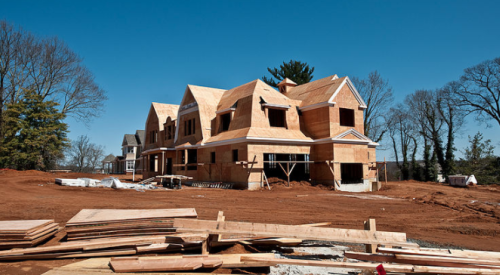|
Every once in a while I think back to an experience that taught me what the home building business is all about — what leaving a home and buying a new one can mean to someone. It all happened because we bought a home that was twenty-some years old.
I decided to do some exploring between the time that we closed and the time that the movers arrived and made an interesting discovery. I found a finished area under the basement stairway with writing on a wall that I'd remember forever.
Drawn by the unusual scribbling, I moved closer and realized I was looking at the history of the family that lived there before us.
Each child had a personal area on the wall, and each area included the dates and the heights of the child. But most striking of all, each entry included a short note that highlighted the special milestones that paralleled their lives: their first bicycle ride, when they chose their prom date, when they graduated from high school and when they selected their college.
I was spellbound, but maybe most of all, I was able to understand the family's memories that would forever be attached to this home. I also realized how much they were leaving behind by deciding to move and how hard their decision must have been.
It's About Great DecisionsHere's an exercise for your next sales meeting: Ask everyone to take out a piece of paper they can use to write a sentence. Have them jot down the reason you pay them a commission; in other words "What do we pay you to do?"
Ask everyone to read their answer. I hope you're surprised by what they have to say. I would bet almost everyone will write, "To sell homes" — which is not the right answer. Let me tell you why.
Sales associates who try to sell something end up doing more talking than associates who try to help customers make great decisions.
Think about it this way. What would you do if you were trying to sell something? Wouldn't you discover what your customer was looking for, make a presentation based on what you learned and then base your closing on your customer's needs?
But what if your goal was to help someone make a great decision? At the very least, you would need two or three times as much information to achieve your goal. In such a case, you'd be asking more questions. And our research confirmed the same thing.
We found that sales associates who were trying to sell homes had less success than salespeople who were trying to help their customers make great decisions. It's a small difference but a powerful one. In an 18-month study in three states and six separate divisions, we were able to prove this point. The results are shown in the chart below.
The key to this type of success is simple: you need to focus on how a customer decides rather than how you need to sell.
It's Not How You Sell; It's How They DecideTo be successful in today's market, there's one thing that's certain; you've got to be willing to change the way you view the world. And with regard to today's market realities, it means being able to think like your customer thinks
Instead of re-exploring your critical path for selling, which has been done a million times, you need to flip to the customer side of the equation and explore your customer's critical path for buying.
Customers don't come to your community to buy a home, and they don't come to your community to eliminate you.
Customers have three distinct decisions they must make before they buy a home from you, and if you haven't planned for each, your chance of success is drastically reduced.
Decision No. 1When customers arrive at your community, they have approximately seven alternatives, anything from staying where they are to buying a resale home to buying from one of your competitors. But with seven possibilities, comparing is complicated and confusing.
Their goal becomes making their comparisons easier. To do this they almost instinctively narrow their choices to two or three alternatives. Their first visit objective is to decide:
"Does this builder belong in my keep or my eliminate pile?"
That means you need a selling strategy that will take you to your customer's next level of shopping.
Decision No. 2Once your customers have decided on the two or three alternatives they like best, they have a new decision:
"Which of my two to three alternatives represents the perfect decision?"
This decision means your customer will reduce his or her choices to one.
Decision No. 3At this point, although a customer has narrowed his or her choices, he or she hasn't said, "I do."
Once customers have reduced alternatives to what they believe is the most perfect, they must make a third decision and ask:
"Is this the correct decision, and should I move forward?"
At this juncture, if you can offer proof, your customer will move forward.
World-Class SellingThere's an old saying that you might even say is the mantra for selling in our industry:
"If you always do what you've always done, you'll always get what you've always had."
Nothing could more perfectly describe the relationship between our industry's selling techniques and the results they produce. If you don't do anything else, at least sit down and compare your selling agenda against your customers' shopping agenda. And if you do that, it's only a small step to the results I've described above.
| Author Information |
| Rick Heaston is president of R.A. Heaston and Co., a sales-training and marketing firm. You can reach him at rick@touchpointselling.com. Read Rick's blog at http://www.probuilder.com/blogs. |
|












